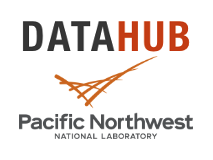Description
Hydrothermal liquefaction (HTL) is a thermal process that converts wet biomass to renewable hydrocarbon fuel blendstocks (i.e., renewable naphtha, renewable diesel, and sustainable aviation fuel (SAF)). It can utilize a wide range of pure and blended wet feedstocks, including sewage sludge from water resource recovery facilities (WRRF), food and agriculture wastes, algae, fats, oils and greases (FOG) and blends of dry and wet wastes/feedstocks. Historically, techno-economic analysis (TEA) and annual state of technology (SOT) assessments with standard economic assumptions used by the Bioenergy Technologies Office (BETO) were conducted for the wet waste HTL pathway leveraging experimental data collected from Pacific Northwest National Laboratory’s (PNNL) continuous flow reactor systems. The objective of the SOT assessment has been to guide and track progress of BETO’s HTL research and development (R&D) toward reduced cost and greenhouse gas (GHG) emissions for the pathway. However, gaps exist between BETO’s traditional SOT updates and the needs of key external stakeholders that – if addressed – will accelerate technology adoption.
This Business Case Study aims to bridge this gap by providing an updated design, TEA, and LCA based on PNNL’s FY23 R&D with added analyses and information that provide enhanced relevance for stakeholders of the HTL technology. This includes specific siting, regional wet waste resource inventory and transportation cost analyses, fuel market information, sustainable fuel policy impacts, economic metrics of net present value (NPV) and internal rate of return (IRR), greenhouse gas (GHG) emissions analysis, and statistical analysis of cost and technical uncertainties of the HTL plant design. The study focuses on the “Detroit combined statistical area (CSA)” region for siting of a wet waste HTL plant adjacent to the Great Lakes Water Authority (GLWA) facility with guidance from industry participants. Regional resource and siting analyses were conducted to identify feedstock availability, scale, and cost, as well as a beneficial site location. TEA with detailed rigorous capital cost estimation for the specific site application was conducted to evaluate the key economic metrics of most value to industrial partners. These include total capital investment, operating costs, minimum fuel selling price (MFSP) of the biocrude and fuel blendstock, and NPV and internal rate of return IRR with sustainable fuel credits. Life cycle analysis was conducted to evaluate the supply chain greenhouse gas (GHG) emissions for the wet waste HTL process as compared with petroleum derived diesel.
This study is also informed by years of R&D and process de-risking learnings and was conducted with a basic engineering HTL plant design and costing that akin to a “first-of-a-kind” plant economics. This differs from our conventional “nth plant ” SOT assessments. Specifically, the HTL process model has been updated with more operationally reliable methods for feed heating and phase separations. Further, we have implemented additional spare equipment for redundancy, a more rigorous installed equipment cost estimation approach, and additional costs associated with feed formatting and delivery, building, piping and site development. An Excel-based cost sheet based on the basic engineering design is also released alongside the report that allows users to conduct customized TEA with their own feed composition and financial assumptions.
